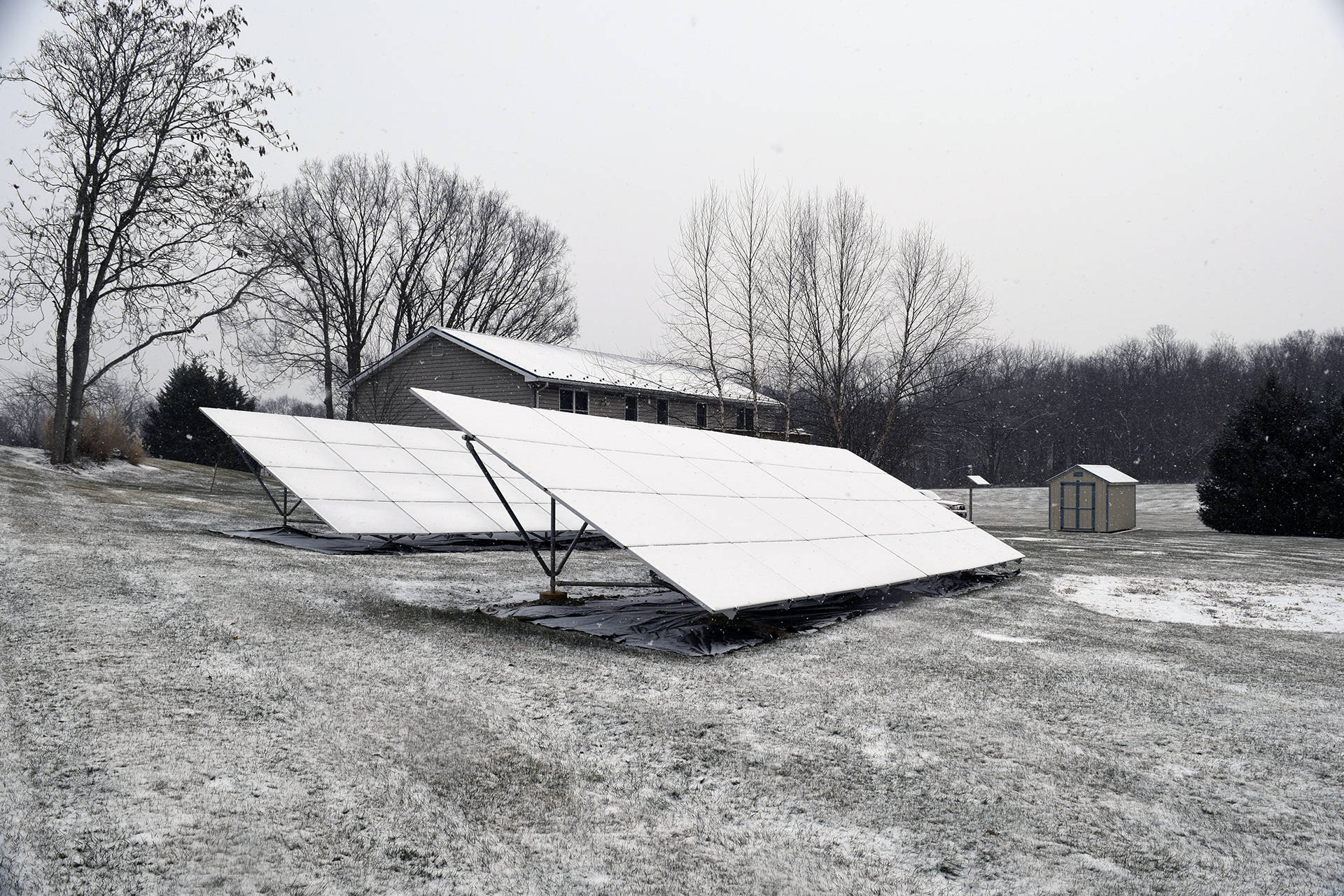Does Solar Work in Winter?
As the days are noticeably shorter and darker, people may wonder what impact this has on solar production. Do solar panels even work in the winter? In this post, we’ll go over some of the things that you should know about winter solar performance. We’ll discuss examples where solar harvest could be poor, but we believe you’ll be surprised that the performance will likely be better than you are expecting. Lastly, we’ll discuss how net metering can keep the electric bill at bay year-round.
Solar and Cold, Short Days
The significantly shorter days will reduce the amount of time that your solar panels are exposed to sunlight. This is going to lower the maximum amount of power that they can produce in a given day. The good news is that it is also cold in winter. Many people are under the mistaken impression that solar panels need heat to work. All solar panels need is exposure to sunlight. In fact, heat makes solar photovoltaic cells less efficient. The cold of winter will actually increase the efficiency and power output of your solar panels.
Every increase of about 2 degrees Fahrenheit will result in about 0.05% less energy output from a solar panel. Of course, as stated previously, the opposite is true with cold weather. This is great news because the significantly colder temperatures of winter helps a bit to compensate for those hours that your solar panels are deprived of sunlight. It is important to note, however, that the temperature of the solar panels is not the same as the temperature of the outdoor air. Solar panels tend to be warmer than the ambient environment as they bake in the sun; even during the winter. However, colder air, especially if it’s breezy, will cool them significantly as compared to summer time.
Solar and Snow
If your solar panels are covered in a couple inches of snow, they aren’t going to work as efficiently. This does not mean that solar does not work in a snowstorm. In addition to being warmer than the ambient outdoor temperature, solar panels are slippery when wet and positioned to catch the most sunlight. Both of these factors help them resist snowfall or eliminate it quickly. Solar panels are also usually installed at a steep enough angle that helps persuade the snow to slide off. Of course, a lengthy snowstorm will eventually get the best of your panels and diminish their crucial power making ability. That said, they will attract enough sun to clear themselves off relatively quickly after the storm ends.
Notice that we said the snow will diminish your power output. It may not cut it off completely until you’ve got at least 3-4 inches built up depending on the density of the snow. That said, even with an inch or two on your panels, some light still gets through and the panels continue making power. In fact, a process known as forward scattering spreads the light out over a larger area as it passes through the snow. You can see a similar effect by shining a flashlight through a sheet of plain glass versus a sheet of frosted glass. This will not negate the loss from the snow cover, but it does help compensate for it in much the same way that the cold weather helps compensate for decreased sunlight hours.
Just The Numbers
After all this, you may still be wondering just how much power you will make in the winter relative to the summer. Sometimes cold hard data is better at setting the mind at ease, so let’s look at some numbers on how a typical 5kW system installed in our service area performs throughout the year. The data presented is pulled from PVWatts.
In the hotter months, April to September, such a system outputs a range of 641kWh to 571kWh per month. Of those months, July is the most productive at 704kWh. The total production estimated for this 6 month period is 3949kWh.
Now that we have our baseline of the warm and sunny months, let’s take a look at how the colder, darker months of winter fare. The months of October to March output a range of 522kWh to 588kWh per month. November, December, and January are the lowest producing, with December representing 347kWh. Things start picking back up starting in February and March gives us the higher end of that range. The total estimated power output during those 6 months is 2693kWh.
From this data, you can see that the average solar setup in our service area generates about 68% of the power in the winter months as compared to the summer months. While this is a significant drop in output, it isn’t the massive drop that some people expect from the winter months.
Net Metering To The Rescue
On a sunny day, the energy generated by your solar system may exceed your home or business’s energy requirements. With net metering, this excess energy flows into the public energy grid and registers as a credit on your electric meter. The surplus energy pushed to the public grid will be utilized by your neighbors and others on the grid. At night, when your PV system is dormant and you need to draw energy back from the public grid (thus reversing the flow) your meter will reverse its direction to register a debit. By the end of the month, these daily credits and debits will have added up to either a net energy debit that you owe the public utility, or a net energy credit that the public utility owes you. Thus the term net metering.
The Billing Cycle
Although the details of the energy billing process with respect to net metering may differ from state to state, there is a common foundation worth mentioning. During each monthly billing cycle, your public utility will show a debit for the energy that flowed from the public grid into your property (highlighted in red in example bill). Conversely, the bill will show a credit for the energy that flowed from your property into the public grid (highlighted in purple in example bill). If the credit exceeds the debit, then the remainder will carry over (i.e. roll over) to next month’s bill (shown here as Banked KWH Credit). Note that although the cost-of-energy component of your current monthly energy bill may be zero in certain cases, you will generally still need to pay a few minor customer fees associated with the billing process.
Nonetheless, the total in such cases will be smaller compared to your former, pre-solar energy bill. Any residual credit that rolls over from month to month will continue to accumulate throughout the annual billing cycle, except in states with an annual true-up period where the utility cuts a check once a year to keep credits from becoming excessive.
Net Metering and Winter
An appropriately sized system can produce enough excess in summer time that by time winter arrives, a substantial banked credit is built up. This offsets the winter electricity bill. If enough credit is built up, it is possible to get through winter without any electricity bill at all – a process called “going net zero”.

mtvSolar will work closely with you to design a system for maximum electricity bill reduction. If the physical space is available for panels, it is possible to completely wipe out the winter bills with banked summertime overproduction.
Next Steps
If you have any questions or are ready to consider going solar, please fill out mtvSolar’s free estimate form here: https://mtvsolar.com/site-evaluation/ or call 540-686-2052 to speak with a live person. We do not sell or lease your personal information. Mountain View Solar focuses on a friendly, local, and professional process to ensure a customized approach to your home or business’s energy solutions.


